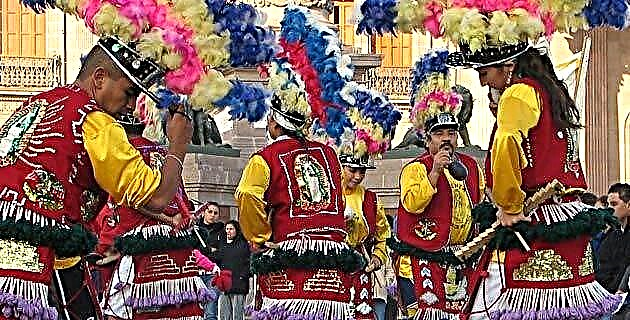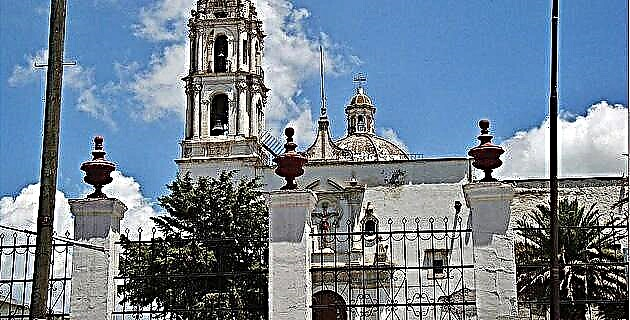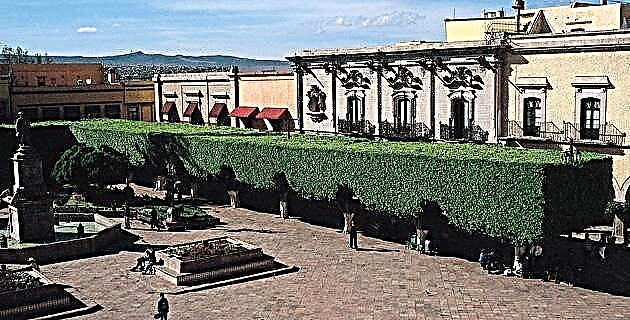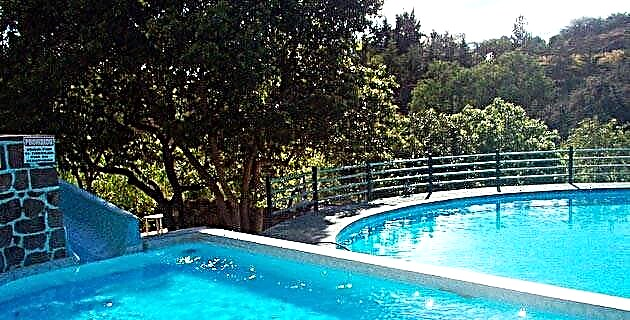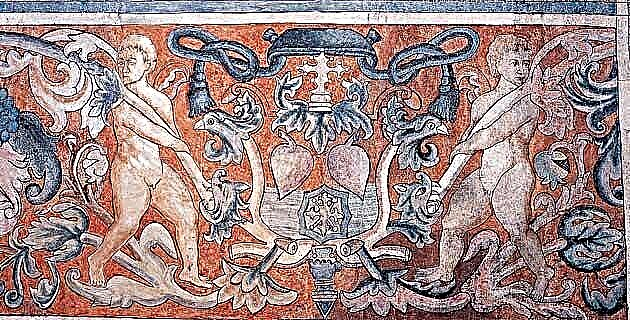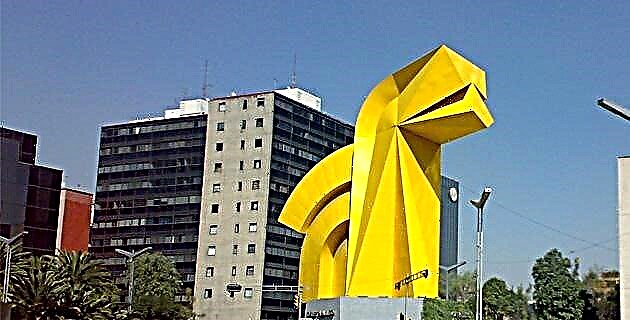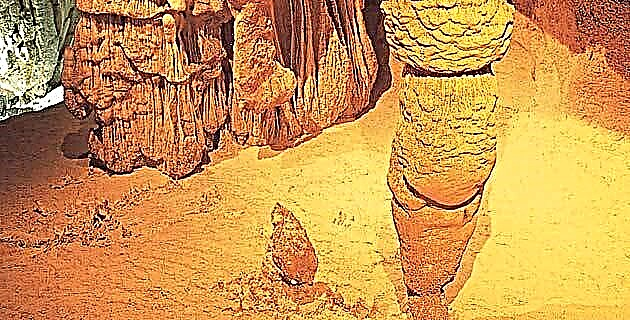
Discover these caverns, located in the south of the state of Tabasco. A place that will surprise you ...
For almost twenty years, a group of speleologists have explored the interior of its mountains and thus discovered an unknown world where total darkness reigns.
We are in the grotto of the Murallón, cavity located in a vertical wall 120 m high in the Grutas de Agua Blanca. The archaeologist Jacobo Mugarte, after examining the fragments of various ceramic pots that are scattered on the ground, comments: "This site was a huge ritual point, what we see are remains of offerings", and shows us a fragment of a piece which has a series of crescent-shaped notches on the edge. "This piece is decorated with fingernail prints and corresponds to a large censer." Jacobo returns the piece to its place and lifts a block of limestone rock. Beneath this are embedded pieces of pottery. “The place is very old,” he points out, “all the material embedded in the block was covered with calcium carbonate… For the ancient peoples of Mesoamerica, caves were sacred sites where the mountain god was worshiped. These vestiges date from the middle or end of the classic, perhaps from the years 600 to 700 of our era ”. The remains are 15 m from the main entrance.
It is probable that the cave, due to its strategic position on top of a hill, was used not only as a sanctuary but also as an observation point. From its edge there is an unbeatable view that covers more than 30 km in distance and includes part of the mountain ranges of the municipalities of Macuspana, Tacotalpa and Teapa, as well as part of the plains of southern Tabasco and the Sierra Norte de Chiapas.
Although the largest agglomeration of ceramics is concentrated at the entrance of the wall, we find that there are huge amounts of fragments scattered throughout the four rooms of the grotto, in its passages and even in small conduits. Ceramic is very varied in terms of quality, finishes and shapes. Some pieces of pot are attached to the concretions by a light layer of calcite.
I am about to conclude the topographic plan of the cave when my colleague Amaury Soler Pérez finds half a pitcher. The piece is in a niche, at the back of a lower chamber. When contemplating the vestige, which remains intact, as it was abandoned, it is difficult for me to believe that it was centuries old when Christopher Columbus reached the shores of America. However, these findings show us that we are in a place where there is still much to explore and discover: it is the Agua Blanca State Park.
The park is located in the south of the state of Tabasco, in the municipality of Macuspana. Its geography is of abrupt relief, with hills of limestone rock, ravines and exuberant tropical vegetation. Located 70 km away from the city of Villahermosa, the park was declared a protected natural area in 1987.
For visitors and a good part of the locals, the site is better known as the Agua Blanca Spa and Waterfall, due to its main attraction, a stream that comes out of a cave and flows between the rocks, in the shade of large trees, forming ponds. , backwaters and the beautiful waterfalls of white waters, from which the park takes its name.
Except for the waterfalls and grotto of Ixtac-HaFew visitors know the beauties and the great biodiversity that the park keeps in its 2,025 ha of surface. The potential for the development of ecotourism activities is enormous; the vegetation of high forest and evergreen medium forest that surrounds and covers the calcareous massifs provide excellent options for the naturalist, the photographic hunter or the nature lover. It is enough to simply follow the paths used by the locals to find a great variety of plant species. And for those seeking a closer contact with nature, it is possible to enter the trails and discover the flora and fauna of the tropics. Also lovers of adventure sports can find alternatives ranging from excursions to abseiling on large vertical walls.
But the State Park is not just a region of jungles and hills. Over almost twenty years a handful of cavers: Pedro Garcíaconde Trelles, Ramiro Porter Núñez, Víctor Dorantes Casar, Peter Lord Atewell and I, have explored the interior of its mountains and have discovered an unknown world, a world of fantastic shapes where total darkness reigns: the White Water cavern system.
THE IXTAC-HA GROTTO
To make this world full of charm and mystery known, we decided to carry out a series of explorations through the four levels that make up the system, starting with the oldest cavern: the Ixtac-Ha cave. This grotto is easy to find. You just have to follow the main walkway and climb a staircase to find the entrance, an imposing gap 25 m wide by 20 m high.
This grotto was recently fitted out for tourist use with cement walkways and lighting throughout the main gallery, through which Don Hilario –the only local guide– is in charge of leading visitors on a tour that takes 30 to 40 minutes.
Although the area open to the public comprises only one fifth of the cave, it represents its beauty and magnificence. Once inside the cavern, you come to a large room from where three galleries depart. The right gallery leads to another exit in the jungle where the floor is covered by thousands of snails. The central gallery leads to a spacious chamber and to two exits that also overlook the jungle. One of them leads right to the top of the hill, on the roof of the cavern. The third gallery, which operates for tourists, is the longest, 350 m long and has three rooms where visitors can contemplate extraordinary figures.
Following the walkway through the tourist gallery we come to the first room, which has the shape of an auditorium with room for about three hundred people. Among speleologists it is known by the name of "Concert Hall" thanks to its acoustics and the recitals performed there by a group of Latin American music.
Next, we cross a passage one meter wide, dubbed the "Tunnel of the Wind" because of the current of fresh air that flows through the gallery from one end of the cavern to the other. When we reach the second room we have to our left a 12 m high cascade of calcite and plaster that descends from the ceiling to the floor. The entire room, 40 m long with a height ranging from 10 to 15 m, is lavishly decorated with marvelous formations, some of colossal size. Large stalactites of white calcite and aragonite hang from the ceiling, forming festoons on the walls. We see curtains, flags, waterfalls, and columns, some fluted and others in the form of piles of plates. There are also streams, which are the most common calcium carbonate deposits in caves, as well as a variety of figures whose names are given by popular imagination.
In the third and last room we find a rock forest. The stalagmites that have formed on the ground and the stalactites that hang from the ceiling make up a fantasy world difficult to describe. Large figures resembling melted candles rise to a height of several meters. The walker ends in an exit to the jungle. Once the visitor enjoys the landscape, they return through the same walker.
There are other areas of interest that are worth exploring. For this reason, it is advisable to go prepared with a lamp, bulbs and spare batteries, and request the services of a guide.
Since 1990, since it was administered by a group of people from the Manatinero Ejido, Agua Blanca has gained a local reputation as one of the recreation centers with the best treatment for tourists and with a clear interest in preserving and protecting the environment.
The Agua Blanca system occupies only a small part in a karst area of 10 km2 with countless caverns, where the amateur or professional can find history, adventure, mystery, or simply satisfy the curiosity to see what lies beyond, or paraphrasing the Captain Kirk from "Star Trek": "get where no one has ever been."

